What is a Chemical Compound?

What is a chemical compound?
Introduction:
A chemical compound is a chemical substance composed of many identical molecules (or molecular entities) composed of atoms from more than one element held together by chemical bonds. A molecule consisting of atoms of only one element is therefore not a compound. There are four types of compounds, depending on how the constituent atoms are held together:
- molecules held together by covalent bonds
- ionic compounds held together by ionic bonds
- intermetallic compounds held together by metallic bonds
- certain complexes held together by coordinate covalent bonds.
A chemical formula specifies the number of atoms of each element in a compound molecule, using the standard abbreviations for the chemical elements and numerical subscripts. For example, a water molecule has formula H2O indicating two hydrogen atoms bonded to one oxygen atom. Many chemical compounds have a unique CAS number identifier assigned by the Chemical Abstracts Service. Globally, more than 350,000 chemical compounds (including mixtures of chemicals) have been registered for production and use.
A compound can be converted to a different chemical substance by interaction with a second substance via a chemical reaction. In this process, bonds between atoms may be broken in either or both of the interacting substances, and new bonds formed.
Types:
Molecules:
A molecule is an electrically neutral group of two or more atoms held together by chemical bonds. A molecule may be homonuclear, that is, it consists of atoms of one chemical element, as with two atoms in the oxygen molecule (O2); or it may be heteronuclear, a chemical compound composed of more than one element, as with water (two hydrogen atoms and one oxygen atom; H2O).
Ionic Compounds:
An ionic compound is a chemical compound composed of ions held together by electrostatic forces termed ionic bonding. The compound is neutral overall, but consists of positively charged ions called cations and negatively charged ions called anions. These can be simple ions such as the sodium (Na+) and chloride (Cl−) in sodium chloride, or polyatomic species such as the ammonium (NH+ 4) and carbonate (CO2− 3) ions in ammonium carbonate. Individual ions within an ionic compound usually have multiple nearest neighbours, so are not considered to be part of molecules, but instead part of a continuous three-dimensional network, usually in a crystalline structure. Ionic compounds containing basic ions hydroxide (OH−) or oxide (O2−) are classified as bases. Ionic compounds without these ions are also known as salts and can be formed by acid–base reactions. Ionic compounds can also be produced from their constituent ions by evaporation of their solvent, precipitation, freezing, a solid-state reaction, or the electron transfer reaction of reactive metals with reactive non-metals, such as halogen gases. Ionic compounds typically have high melting and boiling points, and are hard and brittle. As solids they are almost always electrically insulating, but when melted or dissolved they become highly conductive, because the ions are mobilized.





then €5.99/month after 14 days
Start your 14-day free trial now to publish your sponsored content. Cancel anytime.